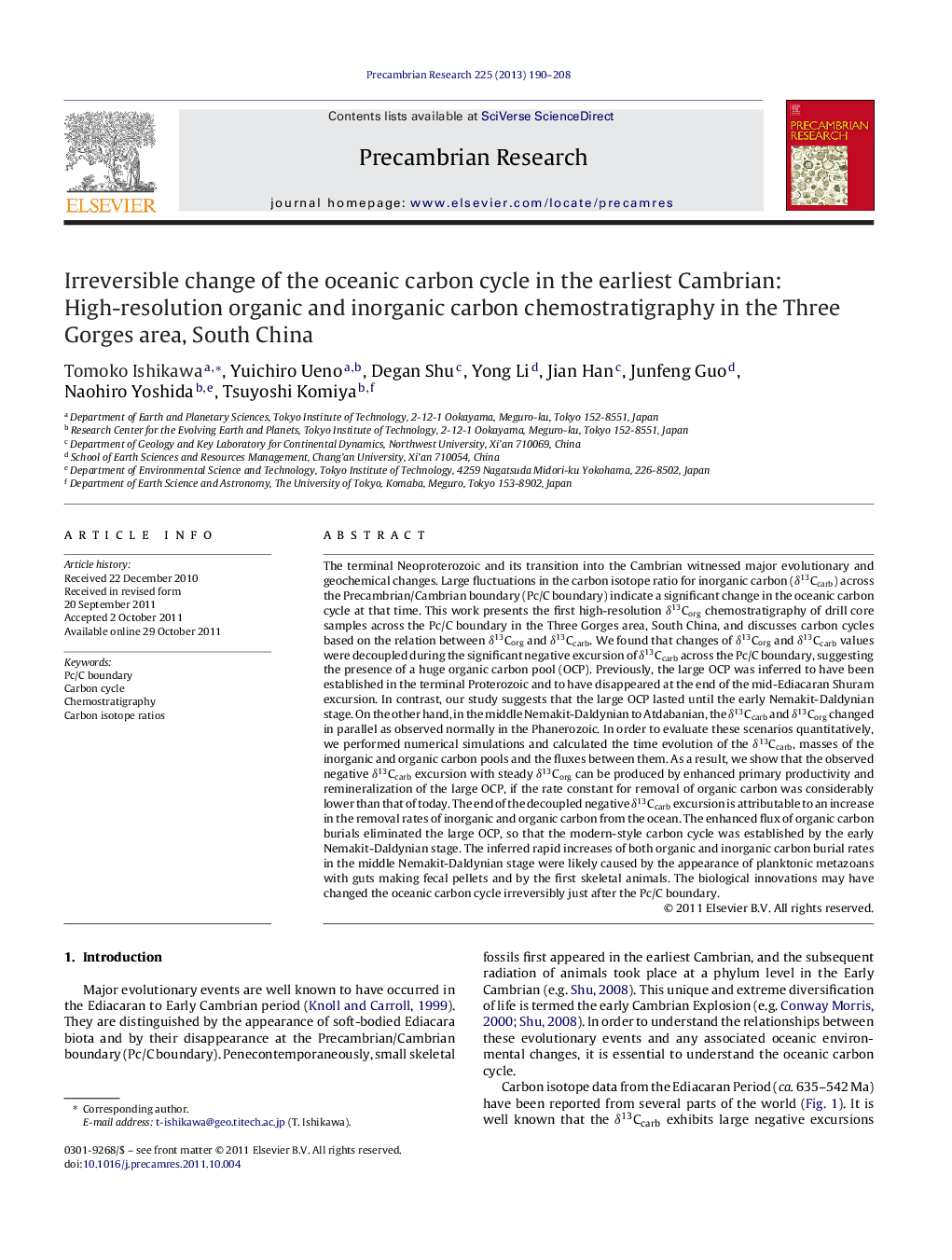| کد مقاله | کد نشریه | سال انتشار | مقاله انگلیسی | نسخه تمام متن |
|---|---|---|---|---|
| 4723325 | 1639649 | 2013 | 19 صفحه PDF | دانلود رایگان |

The terminal Neoproterozoic and its transition into the Cambrian witnessed major evolutionary and geochemical changes. Large fluctuations in the carbon isotope ratio for inorganic carbon (δ13Ccarb) across the Precambrian/Cambrian boundary (Pc/C boundary) indicate a significant change in the oceanic carbon cycle at that time. This work presents the first high-resolution δ13Corg chemostratigraphy of drill core samples across the Pc/C boundary in the Three Gorges area, South China, and discusses carbon cycles based on the relation between δ13Corg and δ13Ccarb. We found that changes of δ13Corg and δ13Ccarb values were decoupled during the significant negative excursion of δ13Ccarb across the Pc/C boundary, suggesting the presence of a huge organic carbon pool (OCP). Previously, the large OCP was inferred to have been established in the terminal Proterozoic and to have disappeared at the end of the mid-Ediacaran Shuram excursion. In contrast, our study suggests that the large OCP lasted until the early Nemakit-Daldynian stage. On the other hand, in the middle Nemakit-Daldynian to Atdabanian, the δ13Ccarb and δ13Corg changed in parallel as observed normally in the Phanerozoic. In order to evaluate these scenarios quantitatively, we performed numerical simulations and calculated the time evolution of the δ13Ccarb, masses of the inorganic and organic carbon pools and the fluxes between them. As a result, we show that the observed negative δ13Ccarb excursion with steady δ13Corg can be produced by enhanced primary productivity and remineralization of the large OCP, if the rate constant for removal of organic carbon was considerably lower than that of today. The end of the decoupled negative δ13Ccarb excursion is attributable to an increase in the removal rates of inorganic and organic carbon from the ocean. The enhanced flux of organic carbon burials eliminated the large OCP, so that the modern-style carbon cycle was established by the early Nemakit-Daldynian stage. The inferred rapid increases of both organic and inorganic carbon burial rates in the middle Nemakit-Daldynian stage were likely caused by the appearance of planktonic metazoans with guts making fecal pellets and by the first skeletal animals. The biological innovations may have changed the oceanic carbon cycle irreversibly just after the Pc/C boundary.
▶ We analyzed δ13Corg and δ13Ccarb chemostratigraphy across the Pc/C boundary. ▶ Those were decoupled from the Ediacaran to the earliest Cambrian. ▶ We calculated a time-dependent model of oceanic carbon cycle. ▶ We suggest balances of geochemical factors across the Pc/C boundary.
Journal: Precambrian Research - Volume 225, February 2013, Pages 190–208